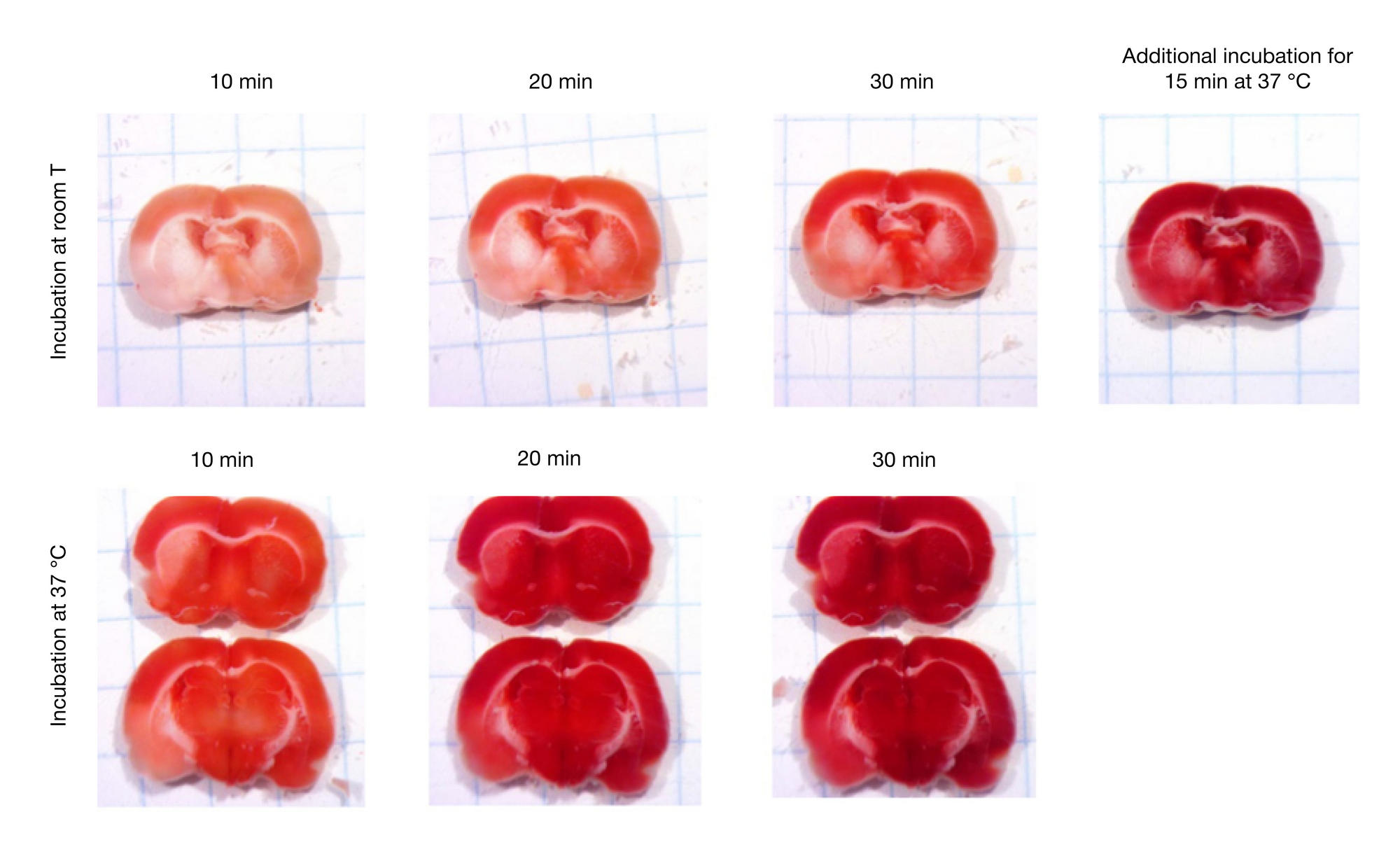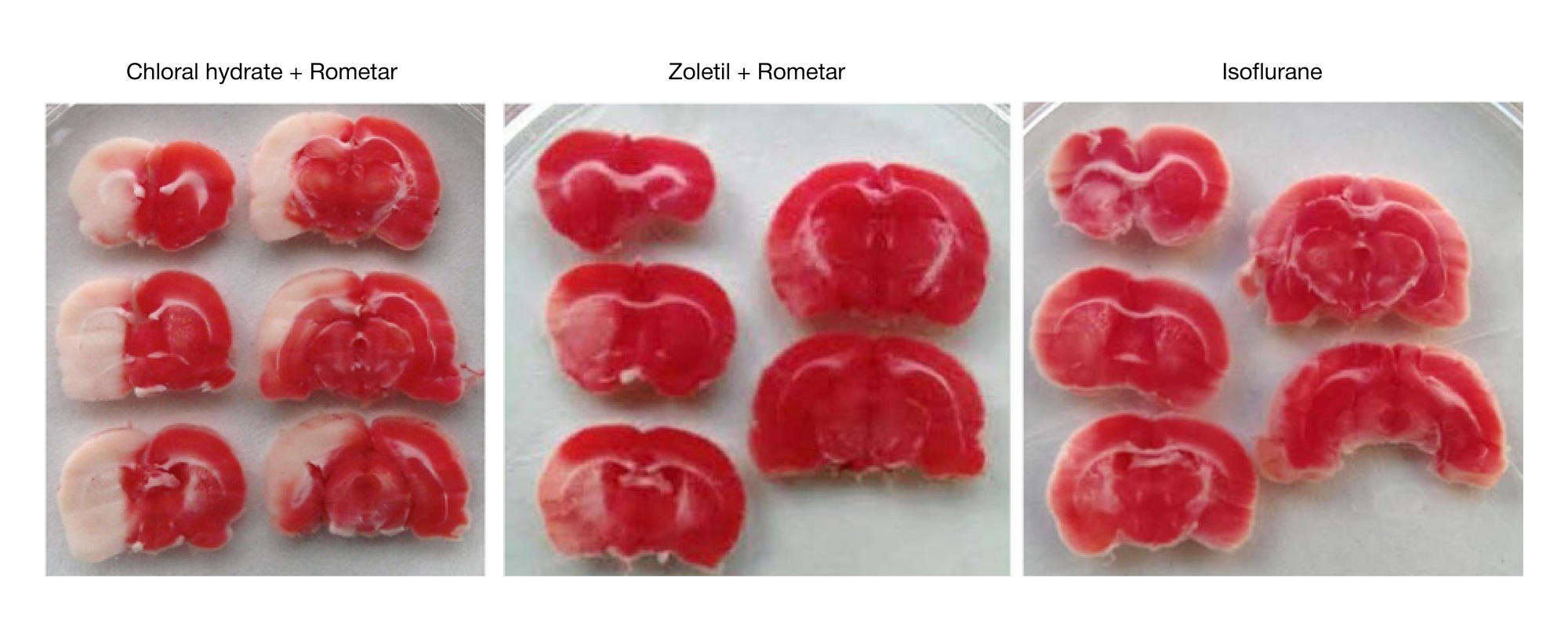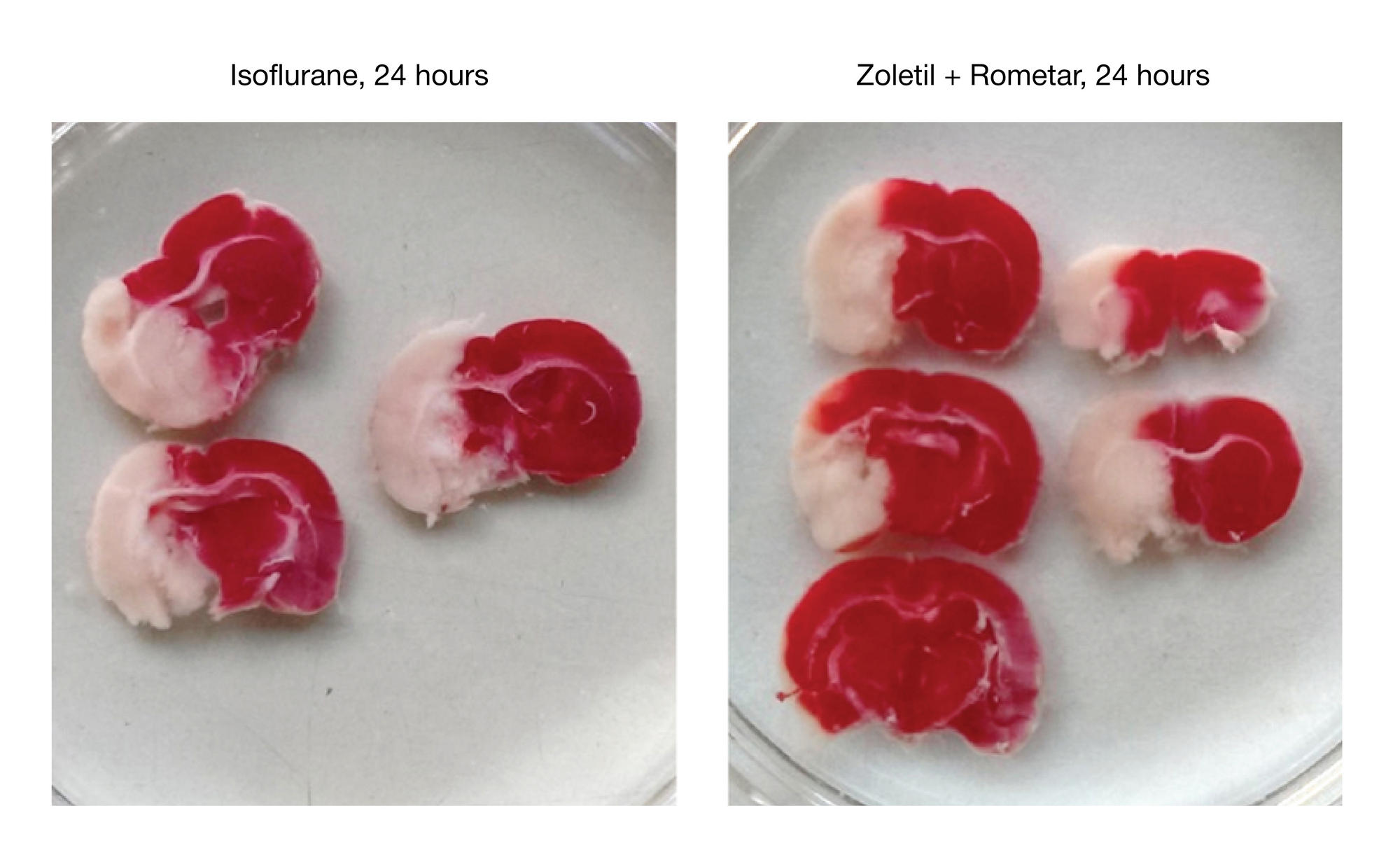
This article is an open access article distributed under the terms and conditions of the Creative Commons Attribution license (CC BY).
ORIGINAL RESEARCH
The choice of anesthetic type and conditions for 2,3,5-triphenyltetrazolium chloride staining of brain slices is important in the assessment of ischemic injury in rats in the early stages of pathology
1 Laboratory for Molecular Technologies,Shemyakin and Ovchinnikov Institute of Bioorganic Chemistry of the Russian Academy of Sciences, Moscow, Russia
2 Department of Brain-Computer Interfaces, Research Institute for Translational Medicine,Pirogov Russian National Research Medical University, Moscow, Russia
Correspondence should be addressed: Vsevolod Belousov
ul. Miklukho-Maklaya, d. 16/10, Moscow, Russia, 117997; ur.hcbi@vosuoleb
Funding: this work was supported by the Russian Science Foundation (Grant 17-15-01175).
All authors' contribution to this work is equal: selection and analysis of literature, research planning, data collection, analysis, and interpretation, drafting of a manuscript, editing.



